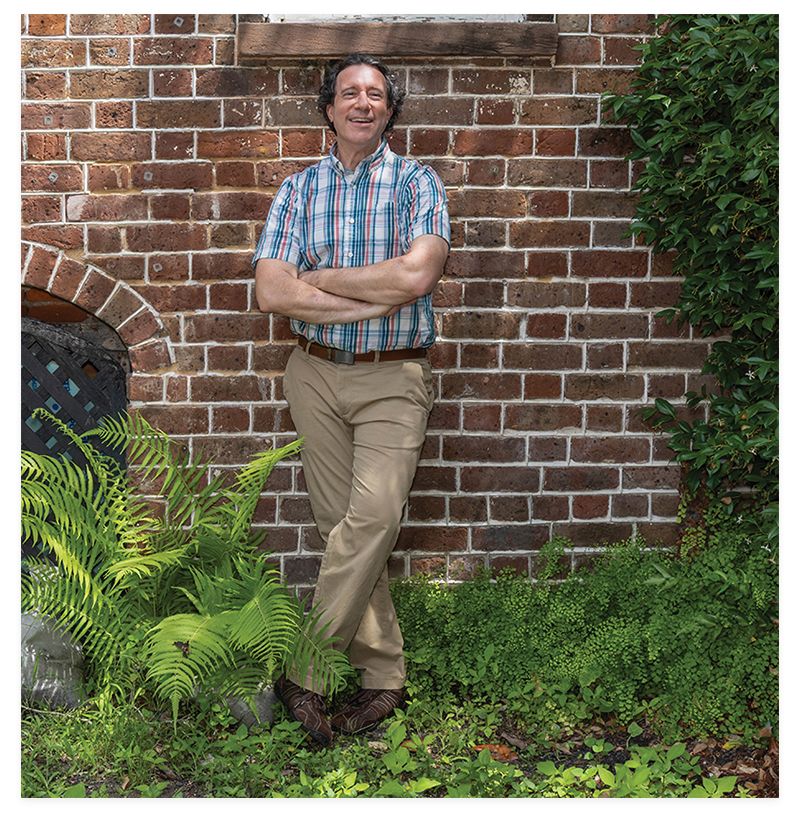Learn about a rare artifact and thousands of finds at the Nathaniel Russell House

Historical anthropologist Andrew Agha has come a long way since a childhood spent mooning over the mummies in the Toledo Museum of Art. Having landed in Hilton Head in 1991, Agha became hooked on uncovering history after signing up for a summer field program at the College of Charleston, going on to earn his doctorate in anthropology from the University of South Carolina in 2020.
Last year, Agha and his team excavated the space under the kitchen of the 19th-century Nathaniel Russell House in collaboration with Historic Charleston Foundation. Thousands of artifacts—including a rare carnelian bead—were recovered, providing valuable insight into the Russell family, as well as the enslaved people who lived and worked alongside them. Here, Agha discusses what such investigations can teach us.
CM: What drew you to this field?
AA: Living in the Lowcountry, my love of colonial history paired with archaeology got me really into plantation studies. Enslaved people built so much of this country by hand; here, they piled up dirt and clay to create rice embankments. I am fascinated by the resilience and permanency of these features you can still walk on 200 to 300 years later. Sometimes, archaeology is the only way we can learn about who the enslaved people really were; how they adapted, thrived, and started families that now have descendants curious about their past.
CM: Tell us your work on the Nathaniel Russell House kitchen.
AA: That was my biggest project so far, a small but complicated space with a lot of players involved, including my team, architectural historians, and tour docents. The project looks small as a footprint in the dirt, barely 20 by 40 feet, but it produced so much work. We found about 9,000 items, ranging from Chinese porcelain to graphite pencils.
CM: Do you have a favorite artifact?
AA: The carnelian bead, a semiprecious stone from the Nathaniel Russell House kitchen. It most likely traveled on an enslaved African’s person during their transatlantic passage and wound up at the house. There’s only been a handful of these beads found in all of North America. It made me cry when I found it; I never dreamed I’d find something like this.
CM: What’s the next step for the project?
AA: Now that all of the field work and site recording is done, it’s time for stabilizing and cataloging. This is fun mode, putting all the puzzle pieces together.
Age: 49
Lives: West Ashley
Family: Wife, Nicole, an archaeologist at the Charles Towne Landing State Historic Site
Education: Bachelor’s of Science in anthropology from the College of Charleston, PhD from the University of South Carolina
WATCH a video showcasing the rare carnelian bead: